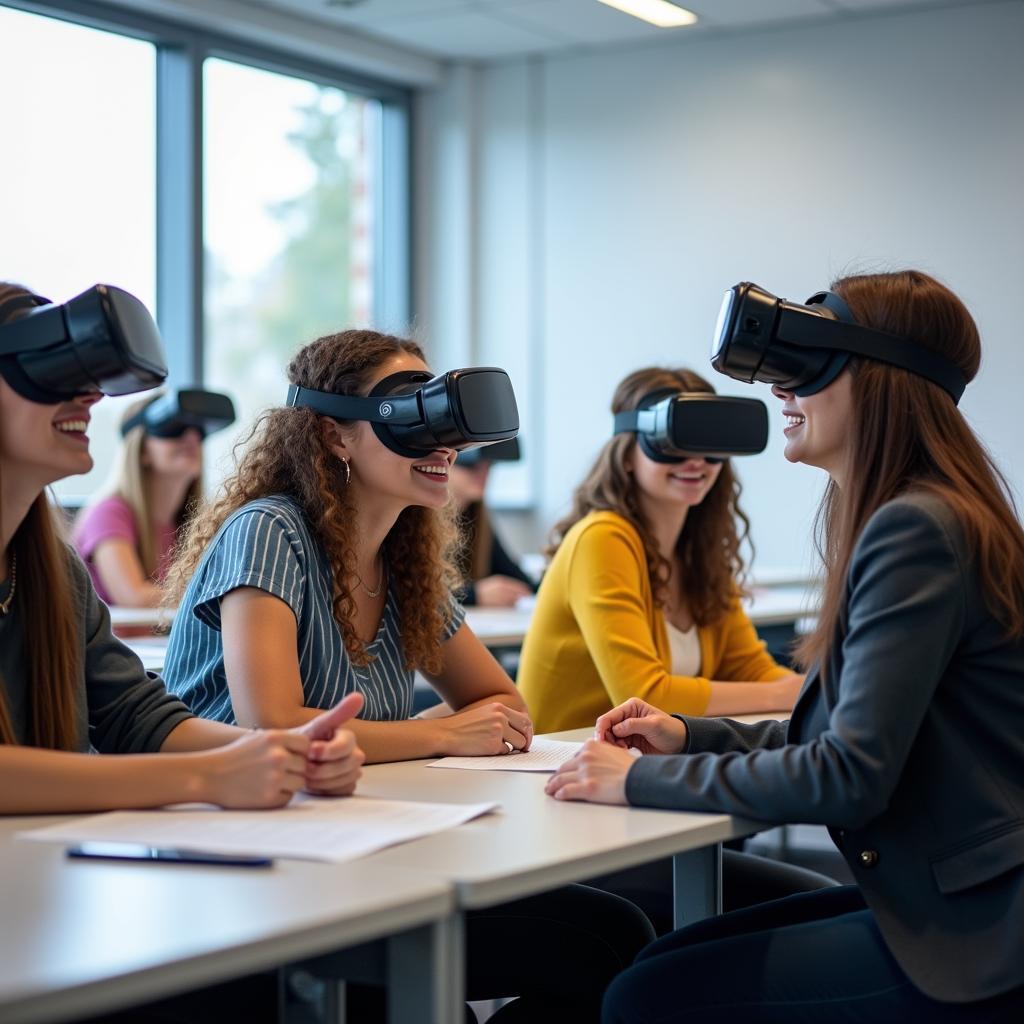Virtual reality (VR) in education has become an increasingly popular topic in IELTS Writing Task 2, particularly as technology continues to reshape learning environments. This theme intersects with broader discussions about how technology affects children’s social skills and educational outcomes. Based on analysis of past IELTS exams, questions about VR in education have appeared multiple times, especially in the technological impact category.
Table Of Contents

Task Analysis
Some people believe that virtual reality technology will revolutionize education by providing immersive learning experiences. Others argue it may reduce human interaction and practical skills. Discuss both views and give your opinion.
This question requires candidates to:
- Examine both positive and negative perspectives of VR in education
- Provide balanced arguments with relevant examples
- Express and justify a personal stance
- Follow a clear essay structure
Sample Essay 1 (Band 8.5)
The integration of virtual reality into educational settings has sparked considerable debate regarding its potential benefits and drawbacks. While some advocate for its revolutionary impact on learning, others express concerns about its social implications. This essay will examine both perspectives before presenting my own viewpoint.
Proponents of VR in education highlight its unique ability to create immersive learning environments that were previously impossible. For instance, medical students can now practice complex surgical procedures without risk, while history students can virtually “walk through” ancient civilizations. These experiences can significantly enhance understanding and retention of complex concepts through experiential learning, similar to how does virtual reality change the learning experience in professional training.
However, critics raise valid concerns about the potential negative impacts of VR technology. The primary argument centers on the reduction of face-to-face interaction between students and teachers, which could hamper the development of crucial interpersonal skills. Additionally, excessive reliance on virtual environments might diminish students’ ability to develop practical, hands-on skills in the real world, much like impact of virtual reality on human interaction in broader social contexts.
In my opinion, while these concerns merit consideration, the benefits of VR in education outweigh the potential drawbacks when implemented thoughtfully. The key lies in using VR as a complementary tool rather than a replacement for traditional teaching methods. Educational institutions should establish guidelines to ensure balanced use of technology while maintaining essential human interactions and practical skill development.
Sample Essay 2 (Band 6.5)
Nowadays, virtual reality is becoming more popular in education. Some people think it is very good for learning, but others worry about problems it might cause. I will discuss both sides and give my opinion.
On the positive side, VR helps students learn better. They can see and experience things that are hard to show in normal classes. For example, students can visit famous places or do dangerous experiments safely. This makes learning more interesting and helps students remember things better.
However, there are some problems with using VR too much. First, students might not talk to each other enough if they always use VR. Also, they might not learn real skills properly if they only practice in virtual worlds. This could be bad for their future jobs and social life.
I think VR is good for education but we should be careful how we use it. Schools should mix VR with normal teaching methods. This way, students can get the benefits of both new technology and traditional learning. Teachers should make sure students still work together and practice real skills.
Vocabulary Analysis
- Immersive (adj) /ɪˈmɜːsɪv/ – providing complete involvement in something
- Complementary (adj) /ˌkɒmplɪˈmentəri/ – combining in a way that enhances or emphasizes good qualities
- Hamper (v) /ˈhæmpə/ – to prevent something from happening or developing
- Integration (n) /ˌɪntɪˈɡreɪʃn/ – the process of combining things effectively
- Experiential (adj) /ɪkˌspɪəriˈenʃl/ – based on experience
- Implementation (n) /ˌɪmplɪmenˈteɪʃn/ – the process of putting a plan into action
- Revolutionary (adj) /ˌrevəˈluːʃəneri/ – causing complete or dramatic change
Conclusion
The impact of virtual reality on education remains a relevant topic for IELTS Writing Task 2. Future questions might explore related themes such as:
- The balance between digital and traditional learning methods
- The role of technology in skill development
- The future of classroom interaction in a virtual age
Practice writing your own response to this question and share it in the comments for feedback and discussion.